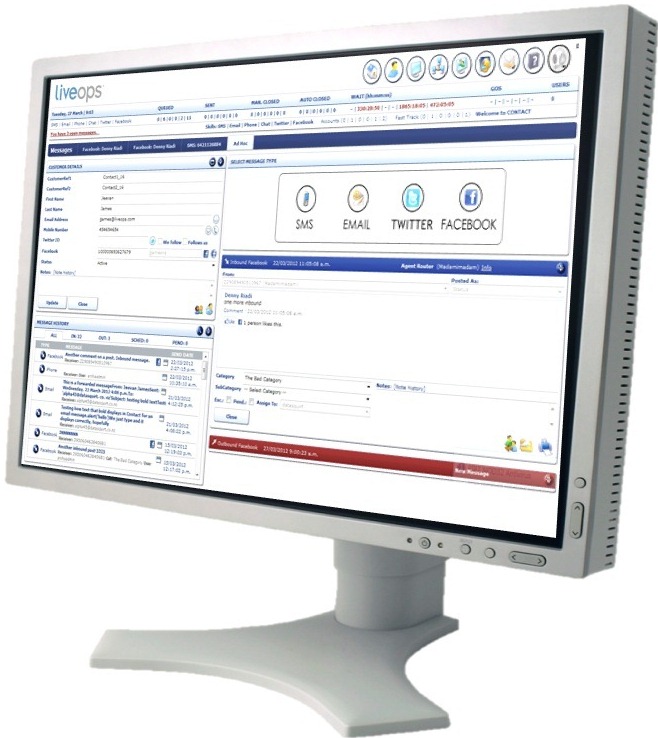Integrating social into CRM for smarter customer care

Customer Relationship Management can only get better with the integration of social tools into the customer process. Some companies ‘get’ social CRM but others have a long way to go.
Sometimes there are examples of social customer care that highlight how some brands try to go to the next level of CRM to help customers.
Social customer care
Lauren McKay tweeted about how much she loved cornbread when she was staying in the Gaylord hotel. Like most socially aware companies the company responded quickly.McKay was offered some cornbread by the hotel. Unfortunately she had already left the premises. Four months later, she stayed at another branch of the Gaylord chain. Shortly after checking in there was a knock on her door.
Room service delivered a selection of cornbread and a hand written note referring to her tweet four months before.
McKay blogged her customer experience about cornbread at the Gaylord. She closed the communications loop and it is obvious that she is a very satisfied customer. Examples such as this are a great validation for the socially savvy Gaylord chain.
Customer service is no longer about us calling a number, being dealt with by someone wearing a headset and running through a standard flow chart that often does not solve our issue.
We communicate using many different channels. Of course some of us prefer to use the phone to sort issues out but increasingly we might prefer to use instant messaging, Facebook or Twitter.
Brands are trying to go social with their customer interactions, but are struggling to integrate social channels into their traditional systems. Traditional CRM, or indeed social CRM might not allow the customers to interact with a real person from the brand.
Brands can also encounter challenges too when switching from public conversations through Twitter and Facebook through to private conversations such as email, instant messaging and voice to voice calls.
Integrated tools
In the UK, the telecoms company BT has a very proactive response to customers with broadband issues.Its Twitter account @BTCare is managed by a small team in the contact centre in Dublin, Ireland. It not only deals with customers promptly, it is happy to communicate using SMS, phone and web. Information from Twitter feeds back into its social CRM system and added to the customer record.
But brands sometimes have challenges integrating the flood of information into social CRM systems. It can be difficult to keep track of each channel of communication. The announcement from LiveOps last week now brings social components into the contact centre.
Its LiveOps social product now integrates Facebook into its cloud platform. It uses social customer interactions and real time social monitoring of Twitter and Facebook pages. Real time monitoring of conversation is vital if the brand is to be proactive and responsive to the customer.
Bringing all of this information together into a single portal makes things easy for the contact centre to keep track of social and CRM conversations. Customers are already talking about brands, but unfortunately many brands don’t have the infrastructure in place to listen effectively.
Marty Beard, President and CEO of LiveOps reckons: “Industry reports indicate that of customers who complain about a company on social media, more than 70 per cent of those complaints receive no response from the company. It’s time for change”.
According to Matt Zemon, president and CEO of American Support: “By the time that customer is using Twitter or Facebook to ask for help, it’s my business to make sure our contact center agents can interact with customers in those channels”
This seems to work well in traditional types of businesses too. The Royal Mail service in the UK uses this co-ordinated approach to engage customers. Steven Henman, Communications Channel Development Manager said:
“We’ve chosen to embrace the fact that customers are already talking about our services out there and we want to be a part of it. So it was really important that we start to engage with these customers.
Talking to customers via Twitter, in blogs and on forums is quite different than sending an email”.
Complaints now happen in real time. It is important that customer service happens in real time too. Integration of social feeds into CRM systems is now a business imperative.
Often a customer reports an issue and is forced into call centre ‘press #1 for support, #2 to complain and #3 to go back to the beginning’ hell. The customer rarely feels valued.
Communicating with customers using their medium of choice keeps them happy, allows the brand to capture the whole conversation and leads to quicker problem resolution and higher satisfaction.
CRM should be about putting the customer first -- not the system. Sadly, not enough companies are enlightened -- yet.
Related content:
